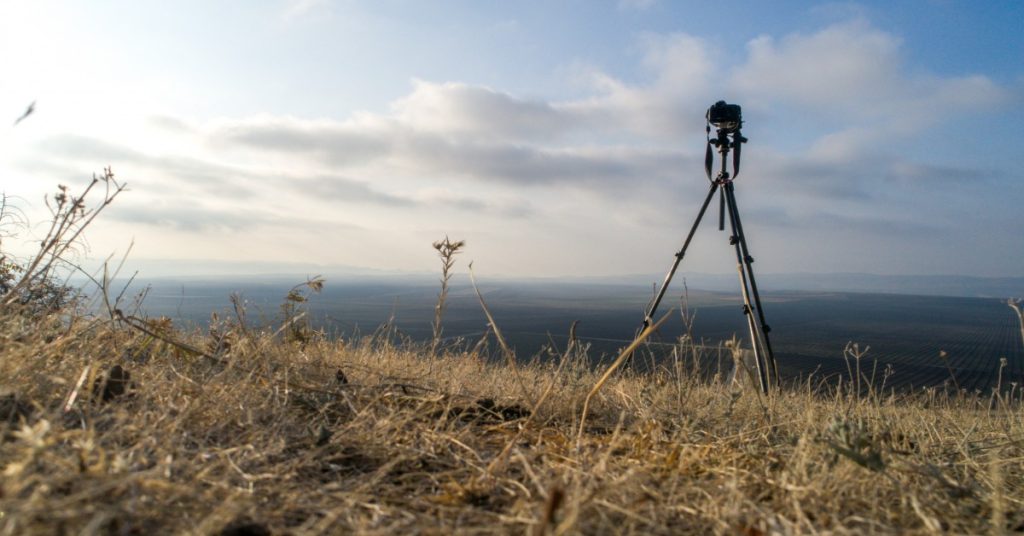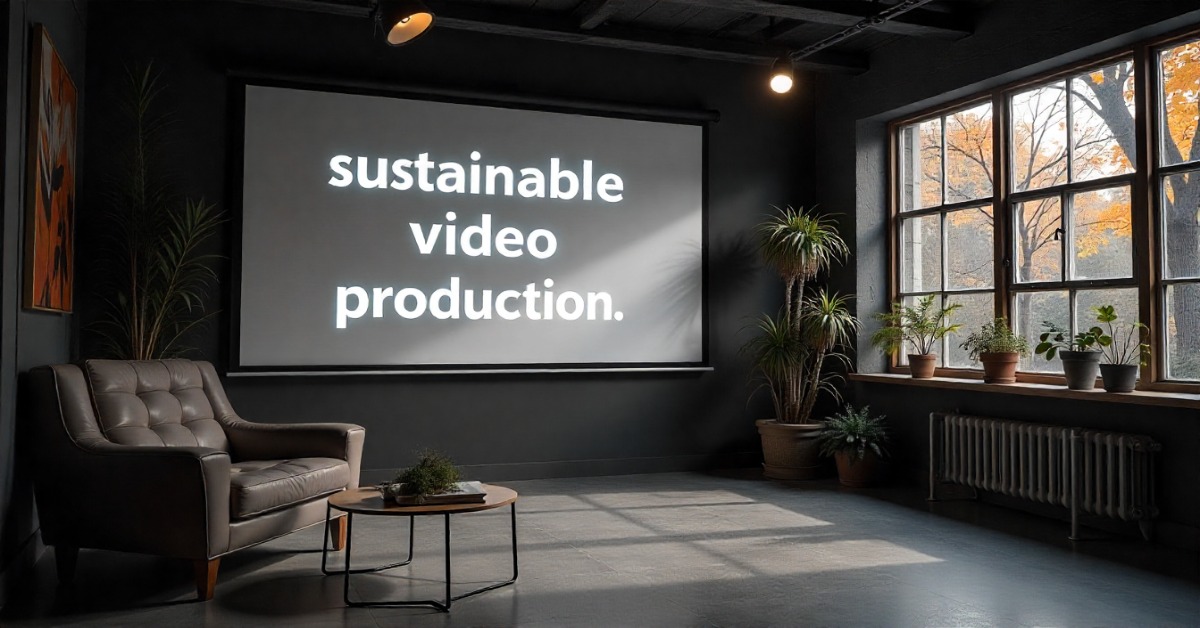6 Practices for Sustainable Video Production: Creativity with Climate Responsibility
Video production is high in demand as high-quality videos are made daily for various purposes. From brand promotions and documentaries to social media reels and corporate training, the demand for high-quality videos has skyrocketed. But it is often an energy-intensive process, contributing significantly to the emission of greenhouse gases. From resource consumption to waste generation and unsustainable travel, video production can leave a significant carbon footprint, if not approached thoughtfully. This’s where sustainable video production comes into play.
Table of Contents
- What is Sustainable Video Production?
- 6 Practices for Sustainable Video Production
- Conclusion
- Frequently Asked Questions (FAQs)
What is Sustainable Video Production?
Sustainability in video production refers to making environmentally responsible choices at every stage of content creation, from pre-production to post-production. It includes minimizing energy consumption, reducing waste, choosing eco-conscious locations, and embracing digital workflows.
It’s essential that we rethink traditional production methods and embrace more sustainable practices. Sustainability in video production not only helps protect the environment but also enhances your brand’s credibility in the eyes of conscious consumers.
A recent report by Albert, the sustainable production initiative by BAFTA, found that the average hour of TV produced generates 13 metric tons of CO₂. It is roughly the same emissions as three people flying from London to New York. This report highlights the urgent need for change in how content is created.

6 Practices for Sustainable Video Production
Let’s learn together how to strike a perfect balance between creativity and environmental responsibility, therefore creating responsibly! Dive into these six actionable and effective practices for sustainable video production.
1. Energy Efficiency
One of the most direct ways to reduce the carbon footprint of video production is by improving energy efficiency on set.
Key actions:
- Use LED lighting, which consumes up to 80% less energy than traditional tungsten or halogen bulbs.
- Choose energy-efficient cameras and monitors.
- Use solar-powered generators instead of gas or diesel alternatives for outdoor shoots.
Real-life example:
BBC’s “Planet Earth II” utilized portable solar rigs for select shoots, reducing fuel use and emissions in remote locations.
2. Waste Reduction
Sets can generate enormous amounts of waste, from food packaging and paper scripts to discarded props and water bottles.
Key actions:
- Use reusable water bottles and tableware for cast and crew.
- Set up clearly labeled recycling and composting stations on set.
- Opt for digital scripts and call sheets instead of printed ones.
Pro tip: Collaborate with local charities to donate unused food or set materials post-production.
3. Green Filming Locations
The choice of filming location plays a vital role in sustainable production. Make sure to select eco-friendly locations with sustainable practices like green building materials and renewable energy sources.
Key actions:
- Prioritize locations powered by renewable energy or buildings certified with green standards (e.g., LEED).
- Choose locations closer to your team to reduce travel emissions.
- Work with location providers that have a sustainability policy.
Example:
Electric Owl Studios in Atlanta is the world’s first purpose-built LEED Gold-certified film studio, powered by solar energy and equipped with sustainable features like LED lighting and rainwater harvesting. (Source: Epsten Group)

4. Digital Workflows
Go entirely digital to remove the use of physical materials since it is convenient and can be a part of the sustainability strategy.
Key actions:
- Use cloud-based collaboration tools like Frame.io or Adobe Creative Cloud to reduce the need for physical media.
- Distribute final videos digitally instead of on DVDs or USB drives.
- Store and back up footage online to reduce hardware usage.
This shift reduces waste production and improves team collaboration, resulting in improved speed of production timelines.
5. Eco-Friendly Transportation
Transportation is one of the largest contributors to production-related emissions, especially on large sets or international shoots.
Key actions:
- Encourage carpooling, shared shuttles or use of public transport for local crews.
- Opt for hybrid or electric vehicles for equipment transport.
- For international projects, you can consider virtual production tools or remote filming teams to cut travel.
Stat check: The ground transportation and air travel together can make up over 50% of a production’s carbon emissions. (Source: Filmlocal & Producing for the Planet)
6. Sustainable Set Design
The lifecycle of set materials is often short, but it doesn’t have to be.
Key actions:
- Build sets using recycled, reclaimed, or sustainable materials like FSC-certified wood.
- Repurpose or rent set elements instead of building from scratch.
- Store modular pieces for future reuse in other projects.
Example:
Warner Bros. Studios has implemented a Set Reuse Program that saved over 100 tons of materials from landfills annually.

Conclusion: Why Sustainable Video Production Matters?
Adopting sustainable video production practices is not about sacrificing quality but to future-proof your work. It shows your commitment to creativity with conscience and positions your brand as a leader in ethical and eco-conscious storytelling.
As environmental awareness becomes more central to consumer values, sustainability isn’t just good for the planet; it’s good for business as well.
The next time you step onto a set, ask yourself: Is this shoot as green as it could be?
Frequently Asked Questions (FAQs) related to Sustainable Video Production
Q1- What do you mean by sustainable video production?
Sustainable video production refers to the process of creating video content in a way that minimizes environmental impact. It involves using energy-efficient equipment, reducing waste, choosing eco-friendly locations, and adopting digital workflows to reduce the carbon footprint of the entire production process.
Q2- What are sustainability practices?
Sustainability practices are actions that aim to preserve environmental, economic, and social resources for future generations. In video production, these include energy-saving measures, waste management, eco-conscious transportation, and responsible sourcing of materials.
Read More
What Benefits Remote Video Production Can Offer to You?
How Can You Use VFX in Corporate Videos to Engage Viewers?
The Hidden Gems: AI Tools for Corporate Video Creators
Q3- What is unsustainable video production?
Unsustainable video production involves processes that are wasteful, carbon-intensive, and harmful to the environment. Examples include excessive travel, use of single-use plastics, fossil-fuel-powered generators, non-recyclable materials, and energy-heavy lighting or post-production practices.
Q4- What is an example of sustainable practice?
A strong example is switching from traditional lighting to LED lighting, which uses significantly less energy, emits less heat, and lasts longer, reducing both power consumption and waste production.


